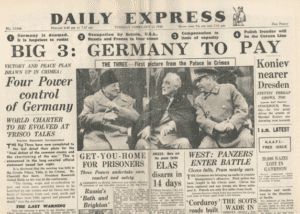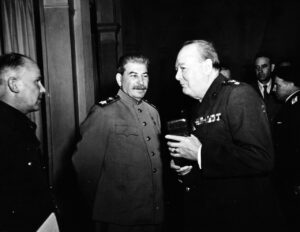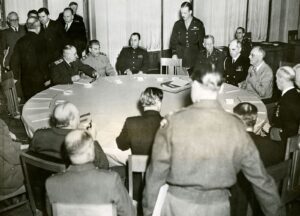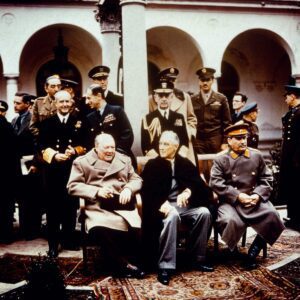This #ForgottenFriday, we are exploring the Yalta Conference towards the end of the Second World War.
On this day 4th February 1945 the Yalta Conference took place in a Russian resort town in the Crimea, during the Second World War.
At Yalta, the big three, U.S President Franklin D. Roosevelt, British Prime Minister Winston Churchill, and Soviet Premier Joseph Stalin made important decisions regarding the future progress of the war and the post-war world.

The Allied leaders came to Yalta knowing that victory in Europe was inevitable but less convinced that the Pacific war was nearing an end. Recognizing that a victory over Japan might require a protracted fight, the United States and Great Britain saw a major strategic advantage to Soviet participation in the Pacific theatre.
At Yalta, Roosevelt and Churchill discussed with Stalin the conditions under which the Soviet Union would enter the war against Japan and all three agreed that, in exchange for potentially crucial Soviet participation in the Pacific theatre, the Soviets would then be granted a sphere of influence in Manchuria following the surrender of Japan. This included the southern portion of Sakhalin, a lease at Port Arthur and a share in the operation of the Manchurian railroads, and the Kurile Islands. This agreement was the major concrete accomplishment of the Yalta Conference.

The Allied leaders also discussed the future of Germany, Eastern Europe and the United Nations. The three agreed not only to include France in the post-war governing of Germany. They also stated that Germany should assume some, but not all, responsibility for reparations following the war (a very similar set of thoughts to the Treaty of Versailles in 1919). The British and US generally agreed that future governments of the Eastern European nations bordering the Soviet Union should be “friendly” to the Soviet regime while the Soviets pledged to allow free elections in all territories liberated from Nazi Germany. Negotiators also released a declaration on Poland, providing for the inclusion of Communists in the post war national government.

In discussions regarding the future of the United Nations, all parties agreed to an American plan concerning voting procedures in the Security Council, which had been expanded to five permanent members following the inclusion of France. Each of these permanent members was to hold a veto on decisions before the Security Council.
The initial reaction to the Yalta agreements was celebratory as there was hope. Roosevelt and many other Americans viewed it as proof that the spirit of U.S.-Soviet wartime cooperation would carry over into the post war period. This sentiment, however, was short lived. With the death of Franklin D. Roosevelt on April 12th 1945, Harry S. Truman became the thirty-third president of the United States. By the end of April, the new administration clashed with the Soviets over their influence in Eastern Europe, and over the United Nations.

But what happened after the Yalta Conference?
At the conclusion of the conference, an agreement was made that they would meet once more after Germany had surrendered, so that they could make firm decisions on any outstanding matters, including the borders of post-war Europe. This final meeting took place at Potsdam, near Berlin, between 17 July and 2 August 1945.


